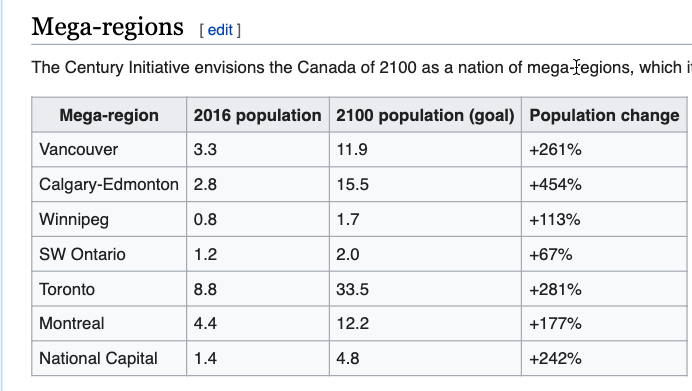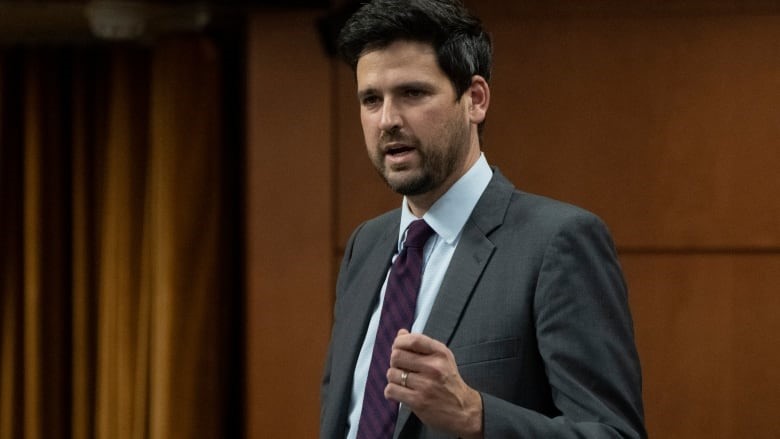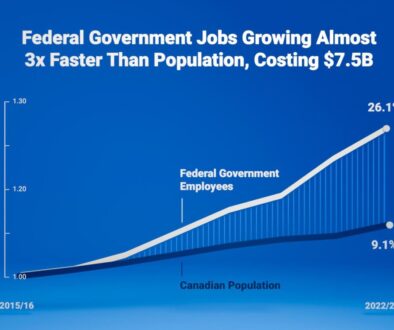Canada’s mass migration plan
A Radio- Canada investigation showed that the US private consulting corporation McKinsey& Company, has received from the Canadian government under Trudeau’s control $66 million since 2015. The money went to different federal departments: Export Development Canada has paid $7,3 million for providing various analyses last year; The Business Development Bank of Canada paid $8,8 million for advice in 2021 and 2022 etc. But the major payment to this company was from Immigration, Refugees and Citizenship Canada {IRCC} with a total amount of $24,5 million. IRCC and the Canada Border Services Agency account for 44% of federal compensation to the firm.
McKinsey& Company recommended an immigration boost for Canada as a condition to maintain economic growth. The Immigration Levels Plan for 2018-2020 allowed 310,000 immigrants in 2018, 330,000 in 2019, and 340,000 in 2020. The Levels Plan for 2020-2022 allowed 341,000 immigrants in 2020, 351,000 in 2021, and 361,000 in 2022. While McKinsey had extensive involvement with the IRCC through its federal contracts, we can see from the numbers that it also seems to have directly influenced Canada’s immigration level through Dominic Barton’s chairing of Trudeau’s Advisory Council on Economic Growth. Dominic Barton is a former global managing director of McKinsey and is very much involved with the World Economic Forum {WEF} and their agendas.
https://www.mckinsey.com/spContent/bespoke/esg-pdf/pdfs/in/McKinsey_2021_ESG_Report_VF.pdf
The Immigration Levels Plan for 2023-2025 goes beyond the initial recommendation of the Advisory Council on Economic Growth by allowing 465,000 immigrants in 2023, 485,000 in 2024, and 500,000 in 2025. This new number, however, can also be linked to the Canadian charity Century Initiative. This organization is a pro-immigration lobby group advocating that Canada’s population should be raised to 100 million by 2100. One of the co-founders is Dominic Barton.
https://www.centuryinitiative.ca/
The federal government appears to be following the Century Initiative immigration targets, on an even earlier timeframe than recommended. The charitable organization initiative envisions a Canada composed of “mega-regions” or “mega-cities” with a massively increased population.

Source: centuryiniciative.ca
Despite the “pandemic” policy and vaccination mandates for traveling and entering the country in 2022, Canada had a record-breaking 431,645 people become permanent residents. Immigration Minister Sean Fraser insists that Canada needs this boosted immigration strategy, and he denied the influence of McKinsey& Company. He said:” I’m not being influenced by them. This is something that I’ve arrived at independently.”

Immigration Minister Sean Fraser{Photo source: cbc.ca}
He continued: “If we don’t continue to increase our immigration ambition and bring more working-age population and young families into this country, our questions will not be about labour shortages, generations from now,” Minister Sean Fraser didn’t specify the numbers, nor how vaccine mandates in Canada affected staff shortage, mostly in the health care.
As Canada planned immigration policy rolls out, some experts warn about potential effects on health care, housing, and the labour market. There are many unanswered questions: Who are these immigrants? What are the actual immigration policies? What’re the qualifications of these people, and how much requalification and settlement will really costs? “Are we talking about high-skill level immigrants or so-called “refugees”, that enter the country under Trudeau’s soft rules, without any checkout?”, an expert worried. Canada’s population clock {real-time model}, is in the link below.
https://www150.statcan.gc.ca/n1/pub/71-607-x/71-607-x2018005-eng.htm
Canadian immigration policy changed back in the nineteen seventies, when under United Nations {UN} recommendations, the Canadian liberal government led by Pierre Trudeau started to accept more immigrants from Africa and Asia. The previous regulations were mostly focused on immigration from European countries: preferably UK, Scandinavia, Netherlands, Austria, France, and Germany.
DB



